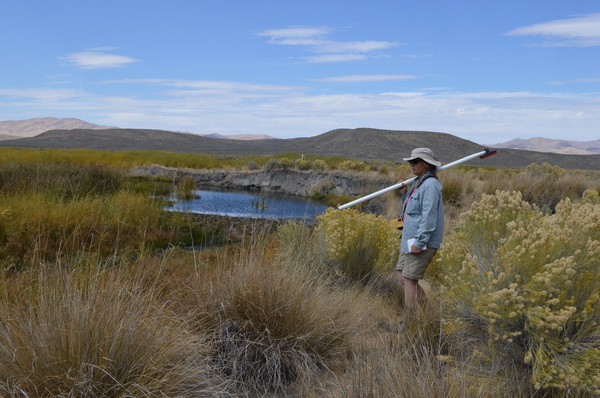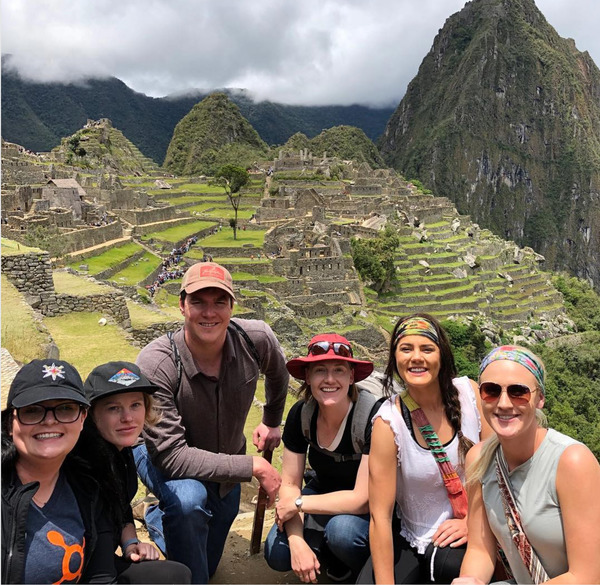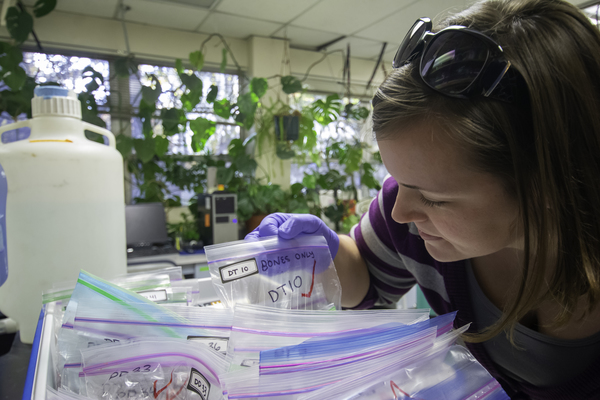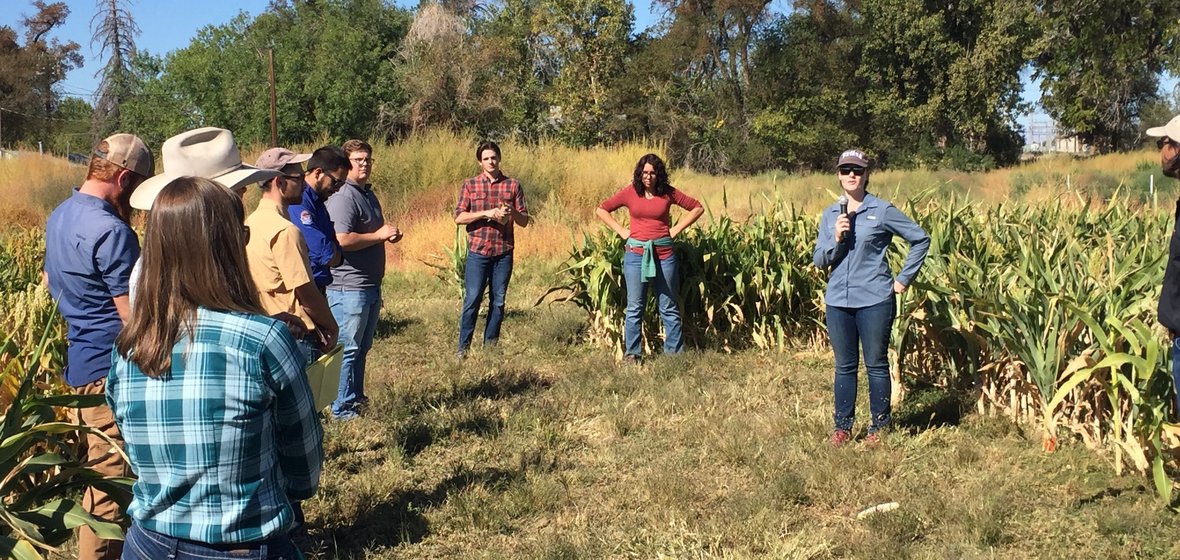Tamzen Stringham
Professor and interim chair, Department of Agriculture, Veterinary & Rangeland Sciences
Q: What is your scientific background?
A: "I’m a rangeland and riparian ecologist. I’ve worked, studied, performed research and played in the cold desert ecosystems of the western U.S. and the temperate rangelands of the Pacific Northwest and Canada since 1984."

Tamzen Stringham surveying Maggie Creek beaver ponds in Carlin, Nevada.
Tamzen's lab is the Rangeland Ecology Lab. There, she produces research and tools for managing rangeland and riparian natural resources in the Great Basin.
Q: What is it like to study the Great Basin?
A: "The Great Basin is a place exemplified by extremes in elevation, climate, soils and vegetation with long distances between gas stations and towns. Like the landscape, the people are hardy and interesting and have deep history of caring for the land. I am fascinated by the magnitude and diversity of this desert ecosystem and the challenges faced by both private and public land managers. I want to understand the ecology of this amazing place well enough to assist land managers by providing useful, science-based knowledge and tools for adaptive management."
Q: Have you been mentored by someone during your career?
A: "I was the second woman PhD graduate from Oregon State University's Department of Rangeland Resources in 1996 and the first woman faculty member hired into that department in 1997. The department head, William Krueger, was an amazing man who was my PhD advisor, my mentor as a young faculty member and today is a lifelong friend. He stood beside me when the world of range science did not accept women as scientists, and he fought for my position in his department – not because I was a woman but because as a woman I would bring 'a diversity of thought and a creativity to the range science profession not currently present in its male dominated culture.' My career in science and education has been extremely successful, and I am grateful to this man who opened a door that had been tightly shut for many years."
Melinda Yerka
Assistant professor, Department of Agriculture, Veterinary & Rangeland Sciences

Melinda took law and plant science graduate students to Machu Picchu to study how law, technology and crop research intersect.
Melinda's lab is the Yerka Lab. There, she works to develop new crop varieties that are more sustainable, nutritious and stress-resistant.
Q: What are you working on?
A: "I'm principal investigator with co-principals Won Yim and Reka Howard on a $500,000 grant to investigate the development of waxy sorghum for diverse food, feed and fermentation applications.
I'm also involved with the de novo assembly of the johnsongrass (Sorghum halepense) genome. Johnsongrass is a noxious weed that sometimes forms hybrids with sorghum, and it's the primary reason why no genetically modified sorghum can be commercialized in the U.S. due to concerns that herbicide-resistance traits from GMO sorghum may transfer to johnsongrass and make it an even bigger problem. I study the genetics underlying the relationship between sorghum and johnsongrass and am attempting to find ways to prevent crop-to-weed gene flow."
Q: Do you work in the community too?
A: "I started ongoing sorghum-based projects across the state with K-12 science teachers and farmers. The projects with teachers are in Lyon and Clark Counties and focus on integrating plant breeding into existing science curriculum, using food crops to teach students about genetics and inheritance, instead of unfamiliar model organisms like fruit flies. The projects with farmers include five Fallon-area producers and one producer north of Reno. They focus on market development for food-grade grain sorghum as a drought-tolerant local crop source of gluten-free flour, pop sorghum, and craft malting, brewing and distilling feedstocks."
Sarrah Dunham-Cheatham
Postdoctoral scholar, Department of Natural Resources & Environmental Science

Sarrah in the lab processing pet food samples to test for toxic mercury. Photo by Robert Moore.
Sarrah's research focuses on how contaminants and heavy metals move through the environment.
Q: Who inspired you to work in science?
A: "I am fortunate to have several role models. Among them, my parents and grandparents instilled in me from a young age that education is very important, and encouraged me to explore all fields of study. My Girl Scout leader noticed my affinity for STEM activities and aroused my curiosity for science from Daisies (kindergarten) through Ambassadors (high school). I also had several teachers that made STEM learning fun and engaging, further solidifying my excitement for science and leading me to choose a career in science. Lastly, the women scientists at the University and in my field continue to inspire me."
Q: Do you come from an academic family?
A: "I was the first person in my family to attend a traditional 4-year university and graduate with a bachelor's degree. Being the first to navigate the higher education system was challenging and a steep learning curve, but with the help of many mentors academia soon became home."
Q: How did you choose your field of study?
A: "My path to environmental chemistry was not a straight one. Growing up, I always had an affinity for nature and the natural sciences. I liked to be outdoors and learn how the world around me worked.
As an undergrad, I knew I wanted to pursue a science or engineering field but was unsure which was the best fit for me. After switching my major from general engineering to general science to Earth sciences to mineralogy to elementary education based on which course piqued my interest most at the time, I took a soil science course and knew that was my calling. It simply fascinated me.
In graduate school, I had the opportunity to conduct research on uranium and mercury, and was even more intrigued by these toxic heavy metals and how they behave in soil and the environment.
Since graduating with my Ph.D., I have worked on groundwater chemistry projects for the Department of Energy's Stanford Synchrotron Radiation Lightsource, taught university-level courses in subjects ranging from soil science to chemistry, and conducted research on iron-carbon interactions in soils, soil-plant interactions, and atmospheric mercury chemistry.
The best part of having taken a winding path to get where I am is that I have a range of experience and tools to conduct my research."












